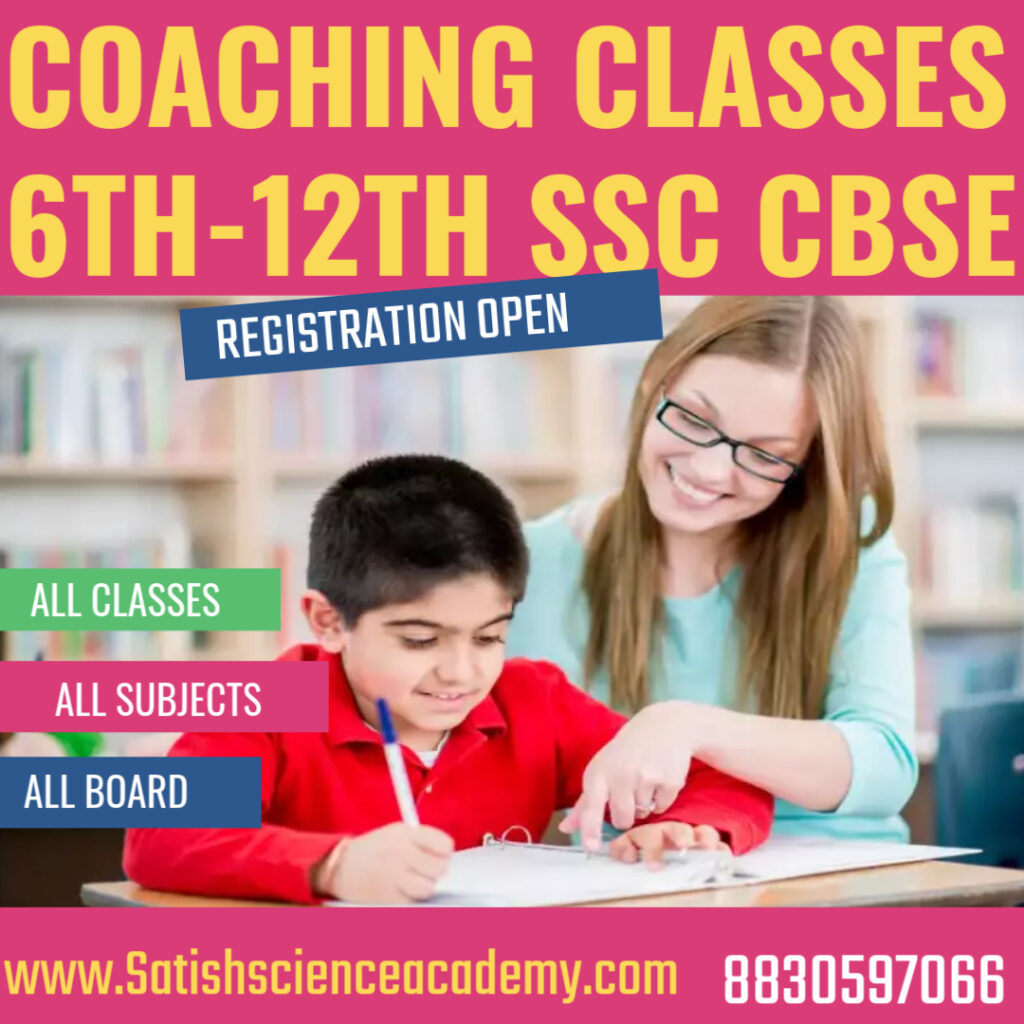Best Class 7 Study Guide in 2025
1. Introduction to Class 7 Learning Journey
Class 7 is often seen as a defining stage in a student’s academic life. It serves as a crucial link between the basics covered in earlier classes and the more advanced, abstract concepts that follow in higher grades. This year is not just about covering new chapters or topics; it is about transforming the way students learn and think. The subjects taught in Class 7—including mathematics, science, Hindi, and English—are designed to deepen understanding, nurture curiosity, and build essential academic skills.
Importance of Class 7 as a Foundation Year
The role of Class 7 as a foundation year cannot be overstated. Up to Class 6, learning is mostly centered around basic facts and simple applications. In Class 7, however, students begin to explore why these facts matter and how they connect across subjects. For instance, mathematics for class 7 introduces students to integers, algebraic expressions, and simple equations—concepts that are fundamental for tackling geometry, trigonometry, and higher algebra in later classes.
Similarly, in science, students move beyond surface-level topics to study subjects like heat, acids and bases, and nutrition in animals. These topics introduce analytical thinking, helping students understand the cause-and-effect nature of scientific phenomena rather than just memorizing information. Languages also evolve: class 7 Hindi and class 7 English textbooks focus on comprehension, creative writing, grammar, and critical reading skills that help students express themselves more effectively.

This year serves as the academic backbone for upcoming board exams, competitive tests, and future studies.
Transition from Basic to Intermediate Concepts
A noticeable shift in Class 7 is the curriculum’s move from basic definitions to more layered explanations and applications. In maths, for example, students advance from simple arithmetic to topics like algebra, rational numbers, and data handling. These are not only new but also require students to apply earlier knowledge in fresh contexts.
Science follows a similar trajectory. Rather than just listing animal types or natural resources, students begin to explore how systems work together—why heat moves from hot to cold, how acids react with metals, and how ecosystems remain balanced. This helps students develop the ability to ask deeper questions and look for logical explanations.
Even in language subjects, the shift is visible. Students are encouraged to read between the lines, understand themes and tones in texts, and write essays that reflect critical thinking. These skills form the basis for success not just in language papers but also in understanding questions in maths and science.
Growing Need for Conceptual Clarity and Problem-Solving Skills
As subjects become broader and deeper, the need to truly understand concepts rather than just memorize answers becomes essential. Take class 7 maths chapter 1 on integers: it’s not enough to remember rules; students must understand why they work, when to apply them, and how to check their answers.
In science, grasping the basic principles behind a process like heat transfer helps students answer practical and application-based questions. The same applies to class 7 hindi and class 7 english, where understanding grammar rules or text meanings supports better writing and comprehension.
Developing problem-solving skills becomes especially important. This is not limited to maths but extends to interpreting data in science, analyzing characters in literature, or constructing logical essays. Practicing with NCERT textbooks, using reference books like RS Aggarwal class 7th and RD Sharma class 7, and solving sample papers help reinforce these skills.
Relevance of Following CBSE / NCERT Curriculum
The CBSE and NCERT curriculum for Class 7 has been carefully designed to guide students from basic to advanced topics in a logical, structured way. The NCERT maths class 7 and science books provide clear explanations, diagrams, and examples to support conceptual understanding. The language books are equally structured to balance prose, poetry, grammar, and writing practice.
Students often use additional books like RD Sharma class 7 and RS Aggarwal class 7th to practice more challenging problems, which strengthens their grasp of tricky topics and improves exam readiness. Following the NCERT curriculum ensures that students stay aligned with the CBSE exam pattern, making it easier to score well while avoiding unnecessary stress.
Sticking to this curriculum also helps maintain a balanced approach: covering what is essential without overloading students with too much information. It promotes clarity, confidence, and consistent learning—qualities that remain useful long after Class 7.
2. Class 7 Maths: Syllabus, Books & Chapter Overview (Expanded)
Mathematics for Class 7 is carefully designed to help students move beyond simple arithmetic into more analytical and logical topics. The NCERT maths class 7 textbook contains 15 chapters, each building on previous knowledge while introducing new ideas that are vital for higher classes.
Here’s a complete list of Class 7 Maths chapters from the NCERT syllabus, followed by an explanation of what each covers and why it matters:
- Integers
- Fractions and Decimals
- Data Handling
- Simple Equations
- Lines and Angles
- The Triangle and Its Properties
- Congruence of Triangles
- Comparing Quantities
- Rational Numbers
- Practical Geometry
- Perimeter and Area
- Algebraic Expressions
- Exponents and Powers
- Symmetry
- Visualising Solid Shapes
These chapters are not randomly arranged—they are carefully sequenced so that students first build number sense and algebraic thinking before exploring geometry and measurements.
Why each chapter is important and what students learn
Integers:
Introduces negative numbers, their addition, subtraction, multiplication, and division. Understanding how to work with negative and positive numbers is fundamental for algebra, data interpretation, and higher-level maths.
Fractions and Decimals:
Deepens understanding of parts of a whole, equivalent fractions, and operations. These skills are used in daily life, science calculations, and advanced maths.
Data Handling:
It explains how to collect, arrange, and understand information by using bar graphs and visual representations—skills that are valuable not only in mathematics but also in subjects like science, economics, and everyday decision-making.
Simple Equations:
Introduces the basics of algebra by teaching students how to create and solve simple equations, building essential problem-solving skills for higher classes. This is one of the most essential skills students use from middle school onward.
Lines and Angles:
Introduces types of angles, properties, and relationships between them. It develops a sense of spatial awareness and sets the stage for more advanced geometric concepts studied in later classes.
The Triangle and Its Properties:
Covers medians, altitudes, angle sum property, and different types of triangles, which are the basis for much of geometry.
Congruence of Triangles:
Explains what makes two shapes identical in shape and size—critical for proofs and advanced geometry.
Comparing Quantities:
Practical chapter involving percentages, ratios, profit and loss, and simple interest—concepts students use throughout life.
Rational Numbers:
Expands the number system to include fractions and negatives in a single category, laying groundwork for real numbers.
Practical Geometry:
Focuses on constructing shapes and angles using ruler and compass, building precision and spatial skills.
Perimeter and Area:
Teaches students to calculate boundary lengths and surface areas of various shapes—a skill useful in daily life and higher studies.
Algebraic Expressions:
Introduces expressions, terms, coefficients, and basic operations, which prepare students for equations and higher algebra.
Exponents and Powers:
Simplifies large numbers and helps with scientific notation, which is essential in science and later math topics.
Symmetry:
Helps students recognize balanced designs and patterns, supporting both artistic sense and mathematical reasoning.
Visualizing Solid Shapes:
Introduces 3D shapes, nets, and views from different angles—vital for understanding geometry, engineering, and design.

Why NCERT Maths Class 7 is the primary book
The NCERT maths class 7 book is recommended by CBSE because:
- It is written in clear, age-appropriate language.
- It explains each concept step by step with examples.
- Exercises include a mix of straightforward, application-based, and challenging problems.
- It prepares students for school exams and higher classes by focusing on understanding, not just memorization.
How reference books help
RS Aggarwal Class 7th Maths and RD Sharma Class 7 are popular because they:
- Provide extra practice with higher difficulty questions.
- Explain multiple methods for solving problems.
- Include mock test papers and word problems to build exam readiness.
These books are especially useful for students who want to aim higher in competitive exams or simply gain more confidence.
Tips to learn Class 7 Maths effectively
- Practice daily: Consistency helps retain concepts and improves speed.
- Understand, don’t just memorize: Ask why a formula works.
- Use diagrams: Especially in geometry chapters like Triangles and Visualising Solid Shapes.
- Solve NCERT examples first: They cover fundamental patterns likely to appear in exams.
- Attempt reference book exercises: To face a wider variety of questions.
Building a foundation for higher classes
Mastering class 7 maths builds confidence and makes advanced topics in class 8, 9, and 10 easier. Whether it’s algebra, geometry, or data interpretation, every topic in class 7 maths is a stepping stone to something deeper.
This is why educators recommend:
- Starting with the NCERT maths class 7 book.
- Practicing extra problems with the help of RS Aggarwal and RD Sharma books for deeper understanding and confidence.
- Solving chapter-end exercises fully, including higher-order thinking questions.
By the end of Class 7, students should not just know the chapters—they should be able to apply what they’ve learned to real-life problems, think logically, and explain concepts clearly.
3. Class 7 Science: Syllabus & Chapter-Wise Summary
Science in Class 7 is carefully designed to spark curiosity and help students see the world around them through a scientific lens. The NCERT science class 7 book introduces students to the foundational concepts of biology, chemistry, and physics in a way that is age-appropriate, engaging, and strongly focused on observation and experimentation. This balanced approach helps students not only learn facts but also develop the ability to ask questions, design experiments, and understand why things happen as they do.
The Class 7 science syllabus includes chapters that cover diverse topics, from plant nutrition and acids to heat, motion, and reproduction. Each topic is chosen to build a foundation for higher-level science in classes 8, 9, and 10, making it easier for students to handle advanced concepts later.
By understanding how to relate what they read to what they see in daily life, students gain skills that go beyond exams: critical thinking, analytical reasoning, and problem-solving.

3.1 NCERT Science Class 7 Overview
The structure of the NCERT science class 7 book is divided broadly into three key streams of science:
- Biology: Topics like nutrition in plants and animals, reproduction in plants, and weather and climate introduce students to living organisms and natural processes.
- Chemistry: Chapters such as acids, bases, and salts; physical and chemical changes help students understand materials and reactions.
- Physics: Topics like heat, motion, and electric current lay the groundwork for understanding physical phenomena.
This blend ensures students see science not as separate subjects but as a connected system that explains the world around them.
What makes the NCERT science book especially valuable is its focus on observation and experimentation. Each chapter encourages students to explore through activities, simple experiments, and real-life examples. For instance, students may observe how leaves respond to light or test the effect of heating and cooling on different substances. This practical approach helps them remember concepts better and makes learning enjoyable rather than stressful.
Additionally, the book uses illustrations, tables, and everyday examples to make complex ideas easier to understand. By presenting science as something visible and testable, rather than just theoretical, it builds genuine interest and curiosity.
Complete List of NCERT Science Class 7 Chapters
The NCERT science class 7 textbook is divided into 18 chapters, covering core topics in biology, chemistry, and physics. Here’s the full list:
- Nutrition in Plants
- Nutrition in Animals
- Fibre to Fabric
- Heat
- Acids, Bases and Salts
- Physical and Chemical Changes
- Weather, Climate and Adaptations of Animals to Climate
- Winds, Storms and Cyclones
- Soil
- Respiration in Organisms
- Transportation in Animals and Plants
- Reproduction in Plants
- Motion and Time
- Electric Current and its Effects
- Light
- Water: A Precious Resource
- Forests: Our Lifeline
- Wastewater Story
Each chapter is carefully designed to explain scientific concepts through real-life examples, activities, and experiments. For instance, chapters like Nutrition in Plants and Reproduction in Plants deepen understanding of biology, while Heat, Light, and Motion and Time introduce important physics concepts. Chapters such as Acids, Bases and Salts and Physical and Chemical Changes help students explore the basics of chemistry.
By covering diverse areas of science, the class 7 syllabus aims to nurture curiosity, observation skills, and the habit of scientific thinking—essential qualities for both academic growth and everyday problem-solving.
3.2 Highlight on Science Class 7 Chapter 1
Chapter 1: Nutrition in Plants is a perfect example of how the NCERT book makes science relatable. This chapter explains how plants make their own food through photosynthesis—a process fundamental to life on Earth. Students learn about chlorophyll, sunlight, carbon dioxide, and the production of food, and why this process is critical for all living beings.
The chapter covers key concepts such as:
- The role of chlorophyll and sunlight in food production
- Explains the various ways plants obtain their food, such as autotrophic nutrition where they make food through photosynthesis, and heterotrophic nutrition where some plants depend on other organisms for nutrients.
- How some plants get nutrients in unique ways (like insectivorous plants)
The book encourages students to test ideas themselves. Experiments and real-life examples in the chapter include observing leaves exposed to sunlight and comparing them to those kept in the dark. Simple activities, like covering parts of a leaf and checking which areas turn blue with iodine, show students how science works outside textbooks.
A strong feature of this chapter—and the entire book—is teaching students how to relate concepts to daily life. Instead of memorizing definitions, students are guided to notice patterns, ask questions (like why some leaves have different colors), and think about why plants are essential for life. This habit of connecting theory with observation makes learning more meaningful and improves retention.

3.3 Learning Tips & Recommended Resources
Learning science effectively in Class 7 is not just about reading and repeating. Instead, it involves active engagement, questioning, and practical exploration.
One of the best ways is through project work and activity-based learning. Projects like making a leaf album, measuring the growth of a plant over time, or testing soil types encourage students to observe and record results, helping them see science as a living subject rather than a set of facts.
Using online videos and animated lessons can also make complex processes clearer. Many educational platforms provide animated explanations of photosynthesis, electric circuits, and other topics covered in class 7 science. Watching these can help visual learners understand better and remember longer.
Additionally, students should develop the habit of writing short notes and drawing labeled diagrams, which are useful for revision and exams. Discussing concepts with classmates, teachers, or even family members also helps clarify doubts and deepen understanding.
In summary, the Class 7 science syllabus is designed not only to teach what is written in the book but to develop skills like observation, questioning, and reasoning. By using the NCERT science class 7 book as the main resource and supporting it with projects, discussions, and digital content, students can build a strong scientific mindset that will help them throughout their education and beyond.
4. Class 7 Hindi: Course Details & Study Tips
The NCERT class 7 Hindi curriculum is thoughtfully designed to combine literature, grammar, and vocabulary in a way that helps students communicate clearly and confidently. Through poems, stories, and structured language exercises, students not only prepare for exams but also build a deeper connection to the language.
The balanced approach of the syllabus ensures that students learn to appreciate Hindi as a living, expressive language rather than simply a subject to memorize. By consistently engaging with reading, writing, and speaking activities, students develop skills that benefit them throughout their academic journey and everyday life.
4.1 Class 7 Hindi Book Overview
The class 7 Hindi book typically contains a rich blend of three main components:
- Poems (कविताएँ): These teach rhythm, expression, and introduce literary techniques like imagery, alliteration, and metaphor. Through poems, students also explore cultural and philosophical ideas in an accessible format.
- Stories (कहानियाँ): Short stories often include folk tales, modern narratives, and moral lessons. They develop reading comprehension, critical thinking, and introduce students to diverse characters and real-life situations.
- Grammar (व्याकरण): Focused on practical usage, grammar lessons cover sentence structure, tenses, synonyms and antonyms, and correct punctuation, which are vital for error-free writing.
This structure ensures that students see the language from multiple angles—creative, practical, and technical—making learning balanced and effective.
One of the most effective study habits is reading aloud. When students read poems or stories out loud, it improves pronunciation, rhythm, and fluency. It also strengthens memory and boosts speaking confidence, which is especially useful in class presentations or oral exams.
Building a strong vocabulary is equally important. Learning new words from texts, noting them in a separate notebook, and using them in daily writing tasks can significantly improve language skills. A richer vocabulary helps students write more engaging essays, explain ideas clearly, and score higher in comprehension exercises.
4.2 How to Improve Hindi Writing & Comprehension
Effective Hindi writing and comprehension require active practice rather than passive reading. Here are practical, tried-and-tested strategies to help students excel:
Daily reading and diary writing:
Encouraging students to read at least a few paragraphs daily—from textbooks, storybooks, or newspapers—helps reinforce new vocabulary and grammar patterns. Following this by writing a daily diary entry in Hindi helps translate passive vocabulary into active use, improving both expression and clarity.
Practicing unseen passages and essays:
Unseen passages are an important part of exams and teach students to read carefully, pick out main ideas, and answer accurately. Regular practice with these passages develops quick comprehension skills, which are valuable in all subjects, not just Hindi.
Essay writing helps students organize thoughts logically and express opinions creatively. Choosing familiar topics makes it easier to write fluently and confidently, while gradually moving to abstract topics builds higher-order thinking skills.
Summarizing and rewriting stories:
After reading a story, students can practice rewriting it in their own words or summarizing it in a few lines. This exercise not only checks understanding but also improves the ability to capture key ideas concisely—an important skill for exams.
Use of additional resources:
Watching short Hindi educational videos, listening to audiobooks, and reading Hindi magazines or children’s newspapers can further strengthen comprehension and listening skills. These resources make learning interactive and help students hear new words and sentence patterns used naturally.
Focus on grammar practice:
Beyond reading and writing, regular grammar exercises help prevent common mistakes in tense, agreement, and sentence construction. This ensures that written answers are clear, correct, and well-structured.
By combining all these methods—reading aloud, daily writing, comprehension practice, vocabulary building, and grammar review—students not only prepare thoroughly for exams but also build a deeper, lasting appreciation of the language.
In conclusion, the class 7 Hindi course is more than just a syllabus; it is a foundation for communication, creative thinking, and cultural awareness. With consistent effort, the right study habits, and thoughtful engagement with the texts, students can turn Hindi from a school subject into a valuable life skill.
5. Class 7 English: Grammar, Literature & Reading Skills
English in Class 7 plays a key role in developing students’ communication, critical thinking, and creative expression. The NCERT English class 7 curriculum is thoughtfully designed to combine reading, writing, grammar, and vocabulary in a balanced way. By exploring prose, poetry, and supplementary reading, students learn not only the rules of language but also how to use English confidently in real life.
This stage is especially important because students move from basic language use to a more structured and analytical approach. They learn to read between the lines, discuss themes, build opinions, and express ideas clearly in both written and spoken English. These skills prepare them not just for school exams but for debates, presentations, and higher studies.
5.1 Class 7 English Book Overview
The English curriculum for class 7 is organized into three main parts: prose passages, poetry, and a supplementary reader.
- Prose: Short stories and essays that introduce students to different themes, cultures, and writing styles. They help develop comprehension and analytical thinking by encouraging students to explore character motivations, plot, and moral lessons.
- Poetry: Selected poems that teach rhythm, rhyme, imagery, and figurative language like similes and metaphors.
- Supplementary Reader: An additional reader that offers longer stories or folk tales, encouraging reading for pleasure and broadening vocabulary.
Together, these books offer a mix of modern and classic literature, helping students appreciate different styles of writing and think critically about what they read.
Topics like tenses, prepositions, conjunctions, and direct and indirect speech help students build accuracy in writing and speaking. Expanding vocabulary helps students write richer essays, answer comprehension questions confidently, and communicate ideas more effectively.
This balanced approach ensures that students see English as a tool for expression and creativity rather than just a set of rules.
5.2 7 Class English Chapter Highlights
The chapters in the NCERT English class 7 books are carefully chosen to be both interesting and educational. Through engaging stories and poems, students explore universal themes like honesty, kindness, courage, and friendship. This not only keeps them motivated to read but also helps develop empathy and cultural understanding.
For example, stories often include dialogues and descriptive language that show students how to write conversations or describe scenes vividly. Poems, on the other hand, teach how words can convey feelings beyond literal meaning.
The books also include activities to strengthen speaking and writing skills. These may include group discussions, role plays, diary entries, letter writing, and creative tasks like continuing a story. By practicing these activities, students learn to organize thoughts clearly, choose the right words, and speak with confidence.
These activities also help develop listening skills, as students often share and respond to classmates’ ideas. This habit of interactive learning makes language practice more engaging and practical.
5.3 Effective Study Strategies
Success in Class 7 English depends on daily practice, active reading, and creative engagement. Here are proven strategies to help students improve comprehension, grammar, and writing skills:
Reading newspapers and storybooks:
Regular reading outside textbooks broadens vocabulary, exposes students to new writing styles, and improves comprehension. Newspapers help students learn current affairs and formal language, while storybooks introduce creative narrative techniques.
Practicing grammar worksheets:
Daily grammar practice helps students master rules and spot common errors. Worksheets focusing on tenses, sentence formation, and punctuation prepare students for both objective and writing-based questions in exams.
Writing summaries and essays:
After reading a story or poem, students should practice summarizing it in their own words. This improves understanding and teaches them to identify key points quickly. Essay writing on familiar topics develops logical thinking and organization of ideas.
Speaking practice:
Reading aloud, participating in discussions, and storytelling improve pronunciation and confidence. Even practicing speeches in front of family members helps reduce hesitation and builds fluency.
Using a vocabulary notebook:
Writing down new words with their meanings and using them in sentences helps students remember and apply them naturally.
By combining these strategies, students move beyond memorizing textbook answers and truly learn how to use English to express thoughts clearly and creatively. This not only helps in exams but builds a lifelong skill that supports academic and personal success.
In summary, the class 7 English syllabus is thoughtfully structured to balance reading, grammar, and vocabulary. Through daily reading, regular writing, and active practice, students gain confidence, improve communication, and discover the joy of language.
6. Beyond Academics: Balanced Study Plan for Class 7
While academic success is important in Class 7, true growth happens when students balance studies with co-curricular activities, sports, and hobbies. A balanced approach helps children stay motivated, reduce stress, and build important life skills like teamwork, time management, and creativity.
Combining Academics & Co-Curricular Activities
Class 7 marks a shift where subjects become slightly more complex, yet students still need time for activities they enjoy. Joining school clubs, music classes, art workshops, or debate teams helps students learn beyond textbooks. These activities encourage creativity, improve social skills, and make learning enjoyable.
Even small habits, like spending 20–30 minutes daily on drawing, music, or creative writing, can refresh the mind and indirectly improve academic performance by reducing fatigue and improving focus.
Developing Time Management and Discipline
A well-planned daily routine can transform how students handle Class 7 workload. Creating a timetable that covers school homework, revision, playtime, and relaxation teaches students discipline and self-management—skills that will help in higher classes and competitive exams.
Simple practices like studying for shorter, focused periods, using to-do lists, and reviewing lessons daily instead of last-minute cramming make a big difference. Parents can support by helping children set realistic goals, track progress, and adjust plans when needed.
Importance of Sports, Hobbies & Mental Well-being
Sports and hobbies are not just extracurricular—they play a major role in physical health, emotional stability, and concentration.
Similarly, hobbies like reading fiction, painting, or learning a musical instrument help students express themselves creatively and relax after studies. Prioritizing mental well-being alongside academics builds resilience, confidence, and a positive attitude toward learning.
Why Satish Science Academy is the Best Coaching Institute & Tutoring Center for Class 7
For families seeking structured academic support, Satish Science Academy stands out as one of the best coaching institutes and tutoring centers for Class 7 grade students, offering both online and offline modes.
Here’s why students and parents choose Satish Science Academy:
- Expert Faculty: Experienced teachers specialize in explaining NCERT concepts clearly and building a strong foundation in maths, science, English, and Hindi.
- Personalized Learning: Small batches and interactive sessions help teachers focus on each student’s strengths and areas of improvement.
- Flexible Online & Offline Options: Students can join physical classroom sessions for real-time interaction or attend live online classes from home—ideal for different learning needs and schedules.
- Doubt-Clearing Support: Regular doubt sessions ensure no concept is left unclear, boosting confidence and exam readiness.
- Study Materials & Test Series: Carefully designed worksheets, chapter-wise tests, and practice papers help students revise thoroughly and track their progress.
- Focus on Balanced Development: Beyond academics, Satish Science Academy encourages students to participate in quizzes, science projects, and activities that build creativity and critical thinking.
By choosing Satish Science Academy, parents ensure that their children not only keep up with the Class 7 syllabus but also develop the discipline, curiosity, and balanced approach needed for long-term success.
In conclusion, success in Class 7 isn’t only about marks—it’s about building healthy habits, staying curious, and enjoying learning. With a balanced study plan, support from family, and expert guidance from institutes like Satish Science Academy, students can make Class 7 a rewarding and stress-free year.
7. FAQs about Class 7 Studies
Which is the best book for Class 7 Maths?
The NCERT Maths Class 7 textbook is the primary recommended book because it explains concepts clearly and matches the CBSE syllabus. For extra practice and deeper understanding, books like RS Aggarwal Class 7 and RD Sharma Class 7 are also highly useful.
What topics are explained in Chapter 1 of NCERT Maths Class 7?
NCERT Maths Class 7 Chapter 1, titled “Integers,” teaches students to work with positive and negative numbers, understand their properties, and apply operations like addition, subtraction, multiplication, and division.
Is RS Aggarwal good for 7th class students?
Yes, RS Aggarwal Class 7 is popular for its wide variety of questions, higher difficulty level, and step-by-step solutions. It helps students strengthen problem-solving skills beyond the standard NCERT exercises.
How to improve English in Class 7?
Students can improve English by reading daily, writing short essays or diary entries, learning new vocabulary, and practicing grammar worksheets. Speaking aloud and discussing stories with classmates or family also boosts confidence.
What is the best way to remember science concepts in Class VII?
Using visual aids, diagrams, simple experiments, and real-life examples helps students understand and retain science concepts. Regular revision and summarizing chapters in their own words are also effective strategies.
How to score better marks in Class 7 Hindi?
Practice daily reading from the textbook, work on grammar exercises, write summaries, and attempt unseen passages. Speaking Hindi confidently at home or with friends also helps improve fluency and vocabulary.
Which chapters are there in NCERT Science Class 7?
NCERT Science Class 7 covers 18 chapters, including topics like Nutrition in Plants, Heat, Acids and Bases, Soil, Respiration in Organisms, Electric Current, Motion and Time, and more.
Are online classes helpful for Class 7 students?
Yes, online classes can be very effective when they include interactive teaching, doubt-clearing sessions, digital quizzes, and recorded lectures for revision. Institutes like Satish Science Academy offer flexible online and offline options.
How can parents help children in Class 7?
Parents can help by encouraging regular study habits, discussing what their child learned each day, providing a quiet study space, and motivating them to balance academics with hobbies and sports.
Is NCERT enough for Class 7 exam preparation?
The NCERT Class 7 books are usually enough to cover the syllabus and score well in school exams. For additional practice and higher-level questions, reference books like RS Aggarwal (Maths) or RD Sharma can help.
How to manage time effectively in Class VII?
Create a balanced daily timetable that includes study, revision, playtime, and hobbies. Break study sessions into short, focused blocks and revise regularly instead of last-minute preparation.
Why is Class 7 considered an important year?
Class 7 builds a bridge between primary and secondary school. It introduces students to more detailed topics in maths, science, and language, which form the foundation for Class 8, 9, and even competitive exams.
What is the role of a coaching center for Class 7 students?
A good coaching center, like Satish Science Academy, offers structured guidance, doubt-clearing, extra practice papers, and keeps students motivated.
How to make Hindi and English grammar interesting?
Use flashcards for vocabulary, play grammar-based games, join storytelling or drama clubs, and practice creative writing to make grammar learning interactive and fun.
What does an ideal daily study timetable look like for Class 7 students?
A balanced timetable includes:
- 1–2 hours daily revision
- Short breaks every 30–40 minutes
- Dedicated time for sports, reading storybooks, and creative hobbies
- Weekend revision or mock tests for practice






